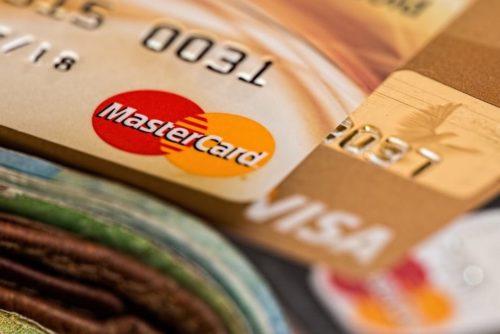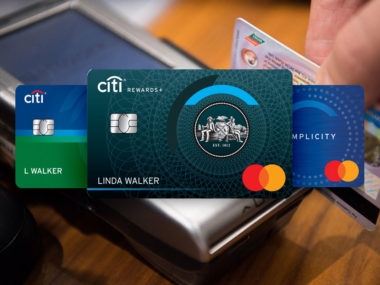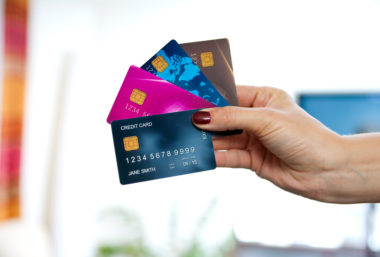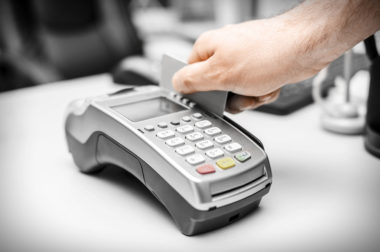A house, a car, a college education, a good job, a good marriage, kids – the American Dream. This hasn’t changed much since the golden era of the 1950s, and it’s still the goal of many. What role does a credit card play in the American Dream, and what are the pitfalls of credit card management to avoid?
Table of Contents
Line of Credit
First, we have to examine what the “credit” part of a credit card means. Credit, measured as a score, is the trust financial institutions put in you as a consumer that you will pay back a loan. It looks at factors such as your payment history and the total amount of debt you owe.
Why is this important? It’s simple – if your score is low, you are less likely to get a loan – or have more strings attached to the loan. You are less trustworthy, and less likely to receive beneficial credit card offers.
What is a credit card? Why do a third of Americans have between one and two credit cards? It’s free money, right? Wrong.
Credit cards are essentially short-term financing, or a loan. It is another form of debt. Think of it this way: A debit card pulls money from your bank account at the point-of-sale, right at the cash register. A credit card puts the bill on credit – read this as a loan – that you will pay once a month. Unlike a debit card, however, you don’t have to pay the entire cost up front, or even when your monthly bill comes due.
Why do we use credit cards? Going back to the American Dream, that dream is expensive. Houses, cars, a good education, and all the rest have steep up-front costs. Using a credit card, and making smaller payments, you can pay off the loan over time. That up-front $20,000 price tag for a car doesn’t look so scary when you are instead paying off a car loan with a $200 bill every month, charged to your credit card. Credit cards were used for 35 percent of transactions in 2014. The next year, 2015, there were 33.8 billion credit card transactions worth $2.56 trillion.
“Delaying payment sounds great!” you say. “Plenty of people are doing it! Time to put the down payment for the house on the card, plus the car payments, and pay off student loans!” A few days and multiple transactions later, each for big-ticket items, you enter in your credit card number to pay for something expensive. To your horror, it’s declined. You’ve maxed out the card.
A credit limit is how much credit you can put on an individual card. For instance, you may only be able to put up to $3,000 credit on a card — any more, and the card will be declined. If you have a $1,000 grocery bill, $200 car payment, and $500 college loan payment each month, that’s over half of your limit. This is also assuming you pay off all of those charges each month. If you pay only a partial amount each month, the leftover payment begins to add up.
Plus, there’s another pitfall with a revolving high usage percentage. Your credit score will take a hit if your usage is more than 30 percent of your limit. On the $3,000 limit, that means not having more than $1,000 used on the card each month. However, if you bring usage down below 30 percent for three months, your credit score will go back up. According to Experian, one of the three credit trackers, cards issued to consumers with “prime” credit scores – between 661 and 720 – had an average credit limit of $5,209 in 2015.
Credit Card Balance and Minimum Monthly Payment
The question now becomes whether you should pay a credit card in full every month or not. The answer: It depends. Are you expecting a credit check for another loan soon? In that case, it’s best to leave some money unpaid each month, but under the 30 percent threshold. If you aren’t worried about your credit right now, you can leave more unpaid.
While paying in full each month surprisingly does not help you with your credit, it is a good financial practice to keep debt from overwhelming you. A revolving balance may be better for your credit, but may not put you in a good financial situation. Don’t despair if you have a revolving credit but want to pay the credit card off – as of January 2017, the Federal Reserve reported a total of $995.1 billion in revolving credit card debt.
Interest, APR, and Credit Card Fees
Opening a credit card with a bank or business is usually free. However, that does not mean there are no costs. First, interest fees. Calculated as an annual percentage rate, or APR, you can often find deals on low APR for the first year. After that, you will pay a percentage of your revolving balance in interest fees each month. For instance, if you have a 14 percent APR, and there was $1,000 unpaid on your card at the end of the monthly billing cycle, your fee is $140. Your new unpaid balance is $1,140. Interest fees, as of November 2016, averaged 12.41 percent.
If you fail to make a minimum payment on time, the APR will be raised, usually for six months. However, there may be a grace period of a day or two for your due date. In other words, if you miss a payment by a day or two, you won’t be subject to the penalty.
Finally, there may be a flat annual fee, depending on the credit card. However, in 2015, only about a quarter of credit cards came with an annual fee.
Credit Card Rewards Programs and Other Benefits
While fees may hamper the path to the American Dream, rewards will help. Rewards largely depend on whether you choose a bank or a business. If you take a credit card out with a bank, you’ll often find the bonus comes in the form of cash back once per year. For example, you may get 1 percent back on most transactions; 2 percent for select companies the bank has an agreement with; and 3 percent on certain types of transactions, such as gas or groceries. Offers vary between banks.
With businesses, you are likely to receive points towards purchases in those stores. It’s a similar system to the cash back from a bank, but the money must be spent at that store. You receive the most cash back on transactions with that stores. Or, for airlines, you may be awarded miles. Money spent translates to miles flown, essentially working your way up to a free flight on that specific airline.
It may take multiple credit cards to achieve the American Dream. Careful management of multiple cards – with or without revolving balance – allows you to delay payment while you wait for a paycheck. You can space out when each credit card is due, tracking which card needs to be paid. You won’t need to pay everything up front, making an expensive house closer in reach than you might think. As long as you avoid pitfalls such as having too much credit on your card, extending over your limit, forgetting to pay, or having too many credit cards to keep track of, the American Dream can become your reality.
Looking for more information on how credit cards work? Visit our credit card resource center. Want better rewards and lower interest rates? Visit our credit score resource center for tips and guides.
Image source: https://www.pexels.com





